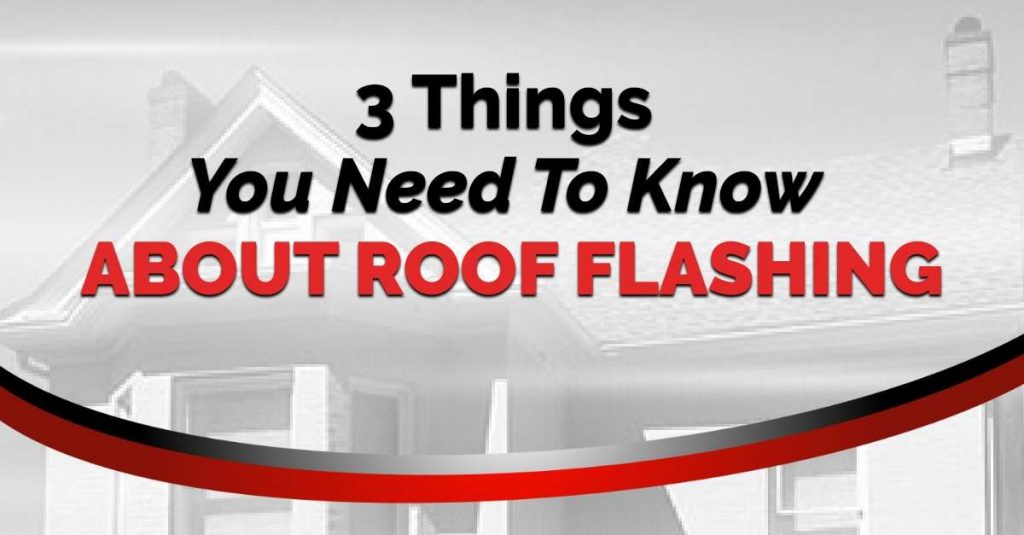Every roof must have an essential element known as flashing. Flashing is an important line of defense against water and will prevent costly chimney and roof leaks. It guides water away from certain parts of your roof – namely, walls, chimneys, and roof valleys. This article will share three things you need to know about flashing, including replacement frequency and types.
1. How Often To Replace Roof Flashing
Do you need to replace your flashing during a roof replacement? The short answer is “it depends.” Your flashing won’t need to be replaced if they aren’t rusted, cracked, or otherwise damaged. However, if your flashing’s integrity has been compromised or if you’re switching from a 3-tab to a dimensional asphalt shingle, you will need new flashing.
We strongly recommend replacing your flashing during a roof replacement. It simply comes down to avoiding issues and leaks down the road. Since you’ll eventually have to pay for new flashing, replacing it with the rest of your roof makes sense. Replacing your flashing after a roof replacement can be more costly due to the additional labor involved. If flashing needs replacing, it’s best to do it during a roof replacement.
As you’re collecting roof replacement estimates, be sure to check your estimate for flashing replacement. Some roofing contractors may purposely leave off a quote for flashing to artificially lower their price.
2. Common Types of Metal Flashing
Flashing comes in a few different metal options. The most common metals for flashing include aluminum, copper, and lead.
- Copper is considered a lifetime material. You might never have to replace your copper flashing if properly installed and paired with a high-quality, long-lasting shingle. However, over time, copper does patina (turning a dark brown, then to a silverish green – think of a penny!), drastically changing its look over the years. Copper is an expensive metal, and the aesthetics of copper flashing do not fit the look of every home.
- We often get asked – is aluminum flashing as good as copper flashing? While copper is the “gold” standard, aluminum is a great, affordable option that offers similar protection. The main difference between copper and aluminum is in thickness and aesthetics. Aluminum also offers many color options, and like copper, it does not rust.
- Lead is comparable to copper in price. Lead has flexibility and can be reshaped around contours in stone and oddly shaped roof penetrations. Depending on the wall or chimney surface, lead may be the best option for avoiding leaks in your roof.
Choosing a Flashing Material for Your Home
Choosing a metal for your home’s flashing largely depends on your budget, the aesthetics of your home, and your chimney. While your roofing contractor can provide some tips and opinions, the choice is ultimately yours.
However, if you have a stone chimney, lead flashing will be the best option to prevent extremely costly chimney leaks. Lead best fits around the contours of stone. If you choose to not replace lead flashing during a roof replacement, it’s important to note that it does alter its look. For brick chimneys, copper flashing are recommended to prevent leaks.
More important than your choice of metal is having your flashing inspected annually to ensure the integrity of the metal remains strong. This will help you prevent costly roof leaks and repairs.
We want you to be educated while making decisions about your most significant investment – your home. Be sure to visit our Learning Center to find information on every part of your roof repair or replacement. If you need a roof inspection or are ready to start your roof replacement – contact us today!
Default insurance Lexington Louisville Richmond roof replacement
